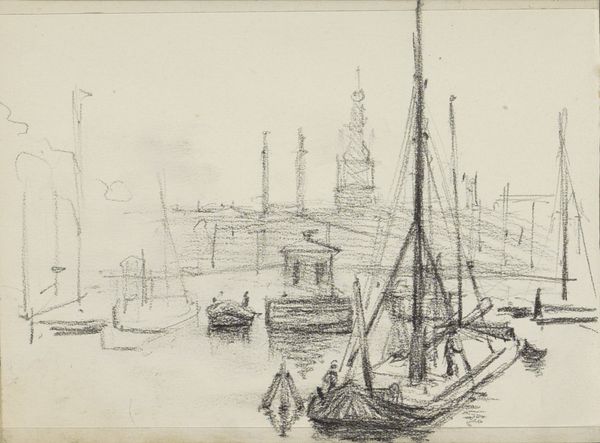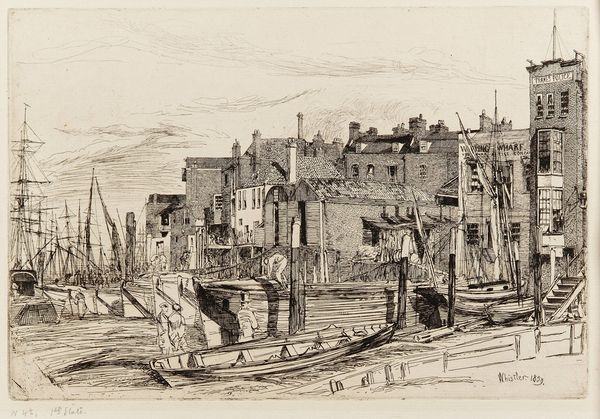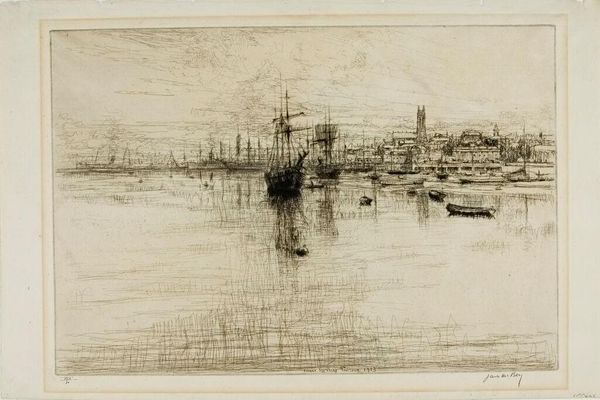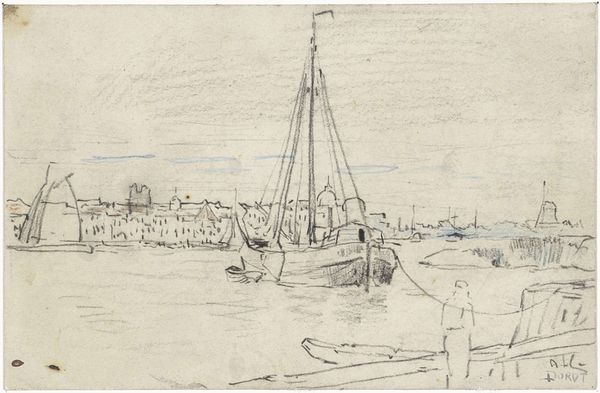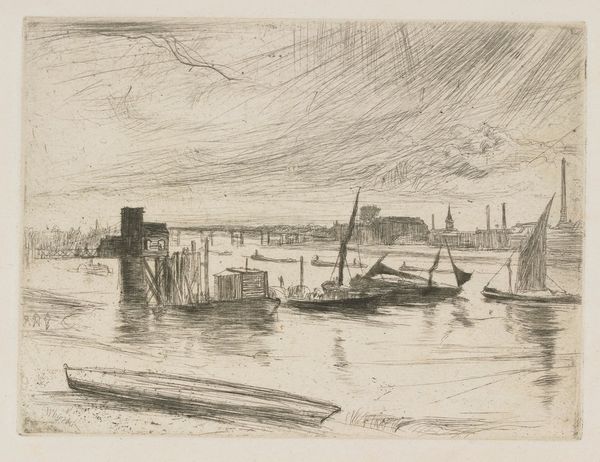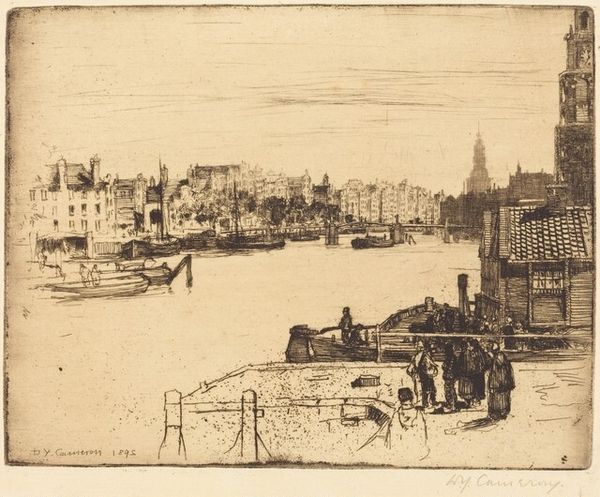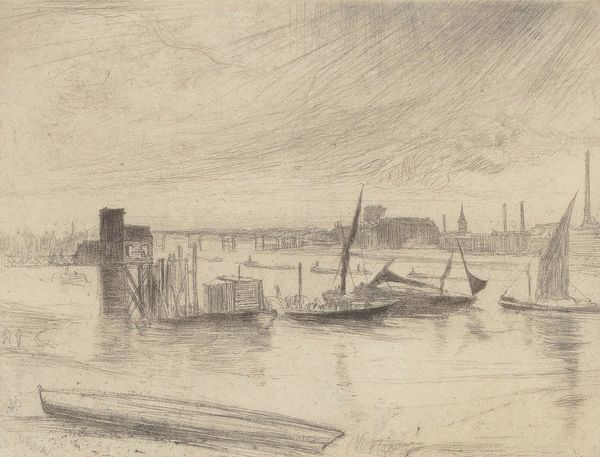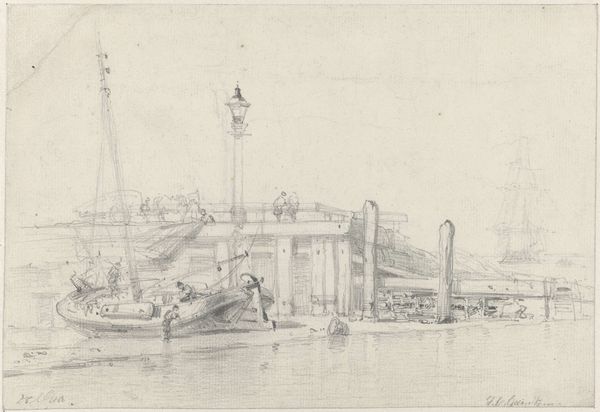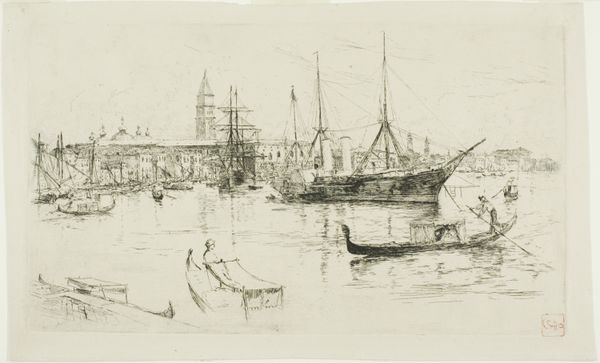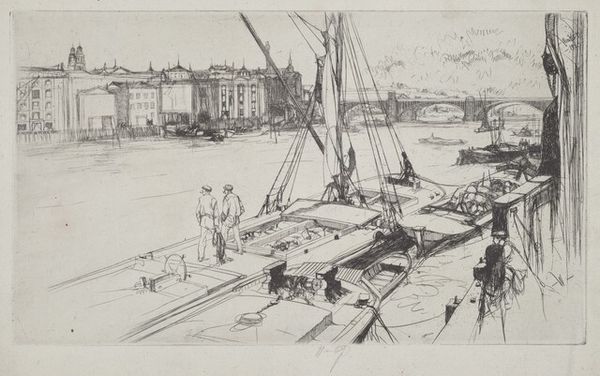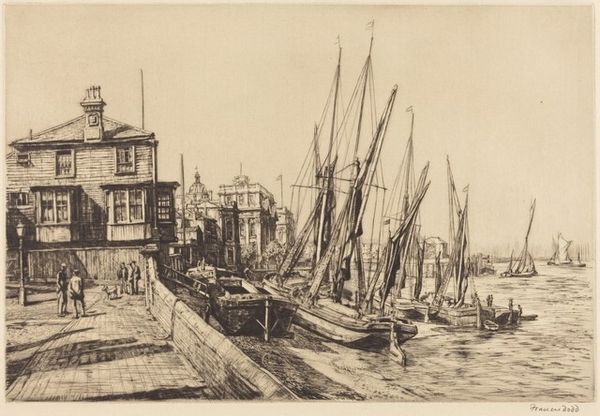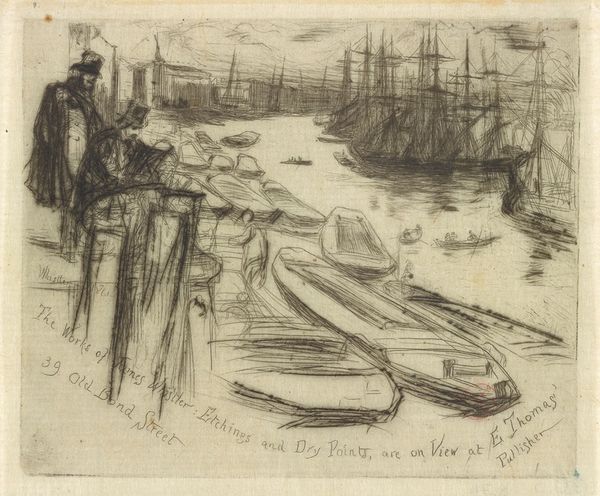
Gezicht op de Singel te Amsterdam met links de oude Lutherse kerk Possibly 1881
0:00
0:00
drawing, pencil
#
drawing
#
impressionism
#
landscape
#
pencil
#
cityscape
#
realism
Dimensions: height 133 mm, width 218 mm
Copyright: Rijks Museum: Open Domain
Editor: This drawing, "Gezicht op de Singel te Amsterdam met links de oude Lutherse kerk," possibly from 1881, is by Jan Toorop, and it looks like it's done in pencil. There's something very immediate and raw about it. It really captures a moment. What's your take on this work? Curator: Well, looking at the drawing from a materialist perspective, it’s fascinating to consider the role of the pencil itself. Inexpensive, easily accessible, a tool for the working class as much as for the aspiring artist. Toorop chooses this most basic tool to depict Amsterdam's architecture, its life, its very being. Does that suggest a deliberate choice to democratize art? To portray the city through the labor it takes to produce images of it? Editor: That's a really interesting point about the pencil's accessibility. So, the choice of material is itself a statement about accessibility and maybe even labor? I hadn't thought of it that way. Curator: Precisely. And consider the 'impressionistic' style here. Quick, ephemeral strokes capturing a fleeting moment. But is it really fleeting? Or is Toorop capturing the repetitive labour that makes up daily life in the city, the repeated strokes, actions, interactions? It speaks to a deep involvement of humans with urban fabric. Editor: So instead of just being about surface appearances or about individual people, it focuses on those repeated aspects? Curator: Exactly. Also, observe how the reflections in the water are rendered. There is hardly any difference to what the eye would see above water. Toorop chose to invest energy to detail how the image of this urban life enters both our vision and how this plays a role in the social consciousness of Amsterdam inhabitants at the time. How these urban waterways contribute in a big way. Editor: This gives a whole new layer to what I first thought was simply a sketch. It shows it’s very detailed observation and meticulous, even repetitive application. I appreciate it so much more. Thanks for showing me how it is more than it first appears. Curator: It’s all about examining the how and why. What labour went into creating a view like that, and how this reflects the urban existence back on itself. I think you see it now, too!
Comments
No comments
Be the first to comment and join the conversation on the ultimate creative platform.

